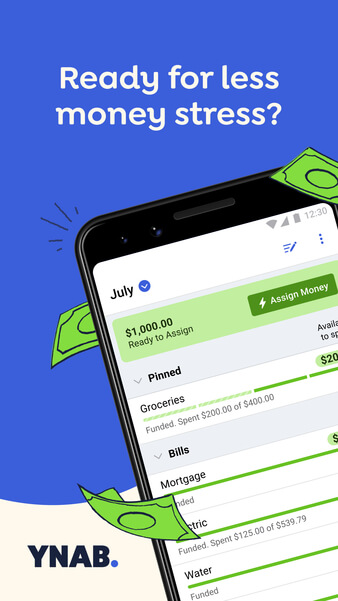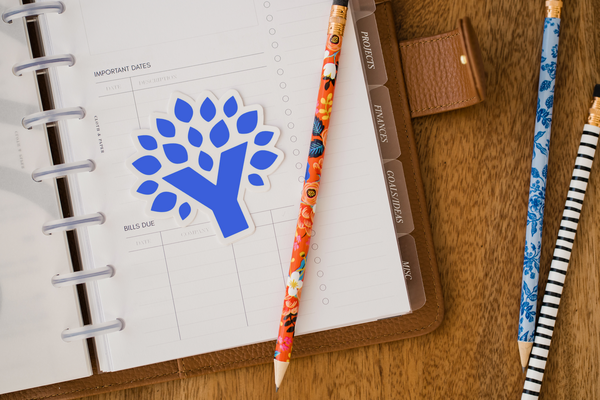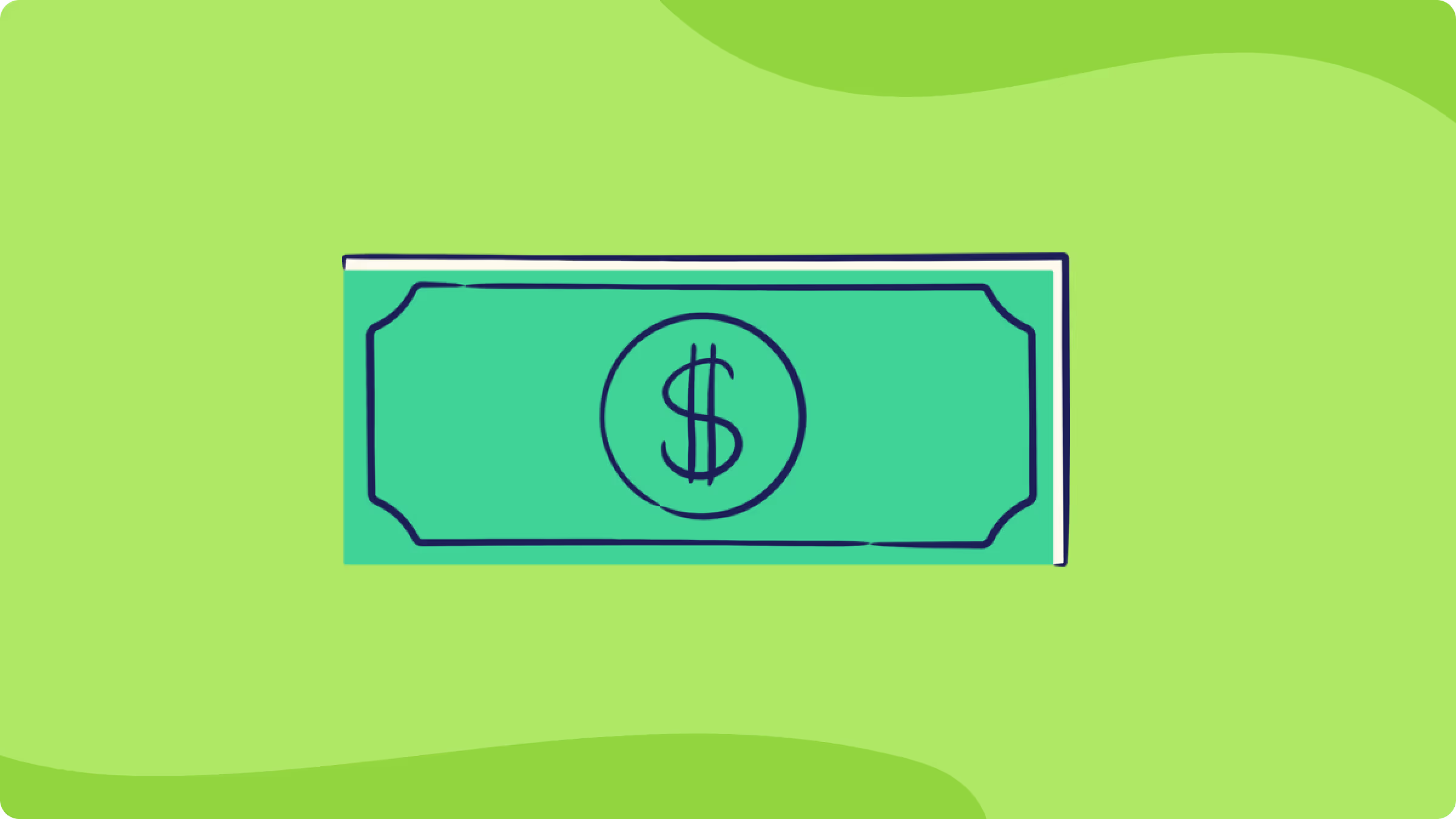It was 4:30 on a Friday, proper earlier than the same old end-of-workday routine at our home. I had wrapped up work just a little early so Katelynn may have the house workplace to herself for her massive assembly. I used to be midway by means of the dishes, the children operating circles round me, when she got here out a lot ahead of anticipated. I knew one thing was unsuitable immediately. Her arms have been crossed tightly throughout her chest, like she was attempting to carry herself collectively.
“I bought laid off,” she mentioned.
In that second, time froze. I hugged her because the swirl of feelings hit us—concern, shock, embarrassment. Her paycheck had been the lion’s share of our earnings.
And but, beneath the load of all of it, I knew: we didn’t have to fret about cash.
I had been utilizing YNAB at that time for the higher a part of a decade. This new journey of job loss would nonetheless be onerous—and emotional—however I had the talents and the instruments to make a plan to get us by means of this.
Does this story sound acquainted to you? Possibly you are going through a sudden job loss or perhaps you are going through a pay lower for different causes: a brand new child, new caretaking duties, a well being disaster, or massive life selections imply you are going through a serious discount in earnings. Regardless of the case, you aren’t alone. The feelings—concern, bewilderment, even anger—are actual and legitimate. However you may get by means of this transition. Step-by-step, alternative by alternative, you possibly can construct a plan that brings readability within the storm.
I am not saying it will not be onerous! Will probably be. However you may come out stronger, since you constructed a plan, identical to I knew I might after we have been hugging it out within the kitchen on that actually crappy day.
For me, it began by creating what I name our slimmed-down spending plan—a bare-bones model of our funds that confirmed us precisely how lengthy we may final on what we had. Let me present you ways I labored by means of it, one step at a time, and how one can too.

The 1st step: Record each expense (with out reducing but).
The very first step I took was to take a seat down and write out each single factor we spent cash on. Not simply the apparent stuff just like the mortgage and utilities, but in addition seasonal and annual prices that may sneak up on you. Soccer charges. Vacation items. Automotive insurance coverage renewals. If you’re going through a pay lower, surprises are the enemy, so I needed all of it in entrance of me.
Because of years of utilizing YNAB—and *pats self on the again* sticking with the strategy—I already had a transparent listing of my bills mapped out as classes in my plan. However reviewing it within the new context of this second was very highly effective. And, I promise, if you happen to’ve by no means made an inventory like this, simply taking this one step will make you’re feeling higher. You’ll be extra organized, extra up to the mark. Generally, in a second like this, it feels nice simply to do one thing, you realize?
However I did not cease there. As soon as I had the listing, I sorted every expense into three buckets: Non-negotiable wants (issues like housing and electrical energy that needed to be paid), negotiable wants (groceries, telephone, web—bills we wanted, however may regulate), and optionally available bills (holidays, streaming companies, eating out—something that I may lower out fully or scale back very considerably). That act of organizing alone was calming. For the primary time since listening to “I bought laid off,” I felt like I may see the form of the issue.
YNAB can be an incredible instrument for this step, and you’ll begin a plan without cost for 34 days. There, you possibly can listing out all of your bills and get a complete quantity of what it prices to be you. Even if you happen to resolve to not proceed with YNAB for now, strive it for this step. You will really feel cash fear exit the window, I promise!

Step two: Slim it right down to create your emergency plan.
As soon as the listing was full, I set to work on constructing our emergency plan. Non-compulsory bills have been the primary to go. Poof!
I reduce on enjoyable spending, streaming companies, fitness center memberships, and giving. I even paused retirement contributions and different financial savings targets. It was robust at first—canceling issues that introduced pleasure—however it was additionally liberating. We weren’t saying goodbye endlessly, simply urgent pause till we had extra stability.
Subsequent, we checked out negotiable classes. Like, we completely stared them down and interrogated each single expense. Our groceries shifted extra towards staples. Web speeds dropped a notch, and our cellphone plan went to a less expensive tier. Every change gave us just a bit extra respiratory room, and added as much as important financial savings.
Even with non-negotiables, we challenged ourselves. Did we’d like each vehicles on the highway proper now? May we re-negotiate mortgage funds? If this was going to be a long-term change ought to we even take into account shifting to a special dwelling? Asking these questions didn’t all the time result in cuts, however the conversations themselves reminded us we had choices even in surprising locations.
On the finish of the train, we had created our slimmed-down spending plan—a survival technique we may lean on till issues improved. I added the whole lot up, together with month-to-month financial savings for non-monthly bills, and bought one massive quantity, the full value to be me each month on this slimmed-down plan.

Having a tough time figuring out needs versus wants? Listed here are 20 cash questions to ask your self after an enormous life change.
Step three: Discover your runway (examine with earnings and financial savings).
Then got here the second of reality: lining up that slimmed-down plan with what we truly had. I added up each greenback in checking, financial savings, our emergency fund and Katelynn’s severance. I additionally thought-about my earnings and the quantity we may anticipate from unemployment insurance coverage. Then I in contrast it to our minimal month-to-month quantity. The maths was easy: whole assets divided by month-to-month wants minus month-to-month earnings = our runway—the variety of months we may final with out having to enter debt.
Seeing that quantity in black and white was each sobering and reassuring. Sobering, as a result of it confirmed us precisely how restricted our time was if no new earnings got here in. Reassuring, as a result of uncertainty had been changed with readability. We not needed to surprise and fear—we knew precisely what we have been working with.
For me, the information was total extra reassuring. As a result of we might been following the YNAB methodology for thus lengthy, we had gotten good with cash and really had a variety of money readily available. We have been a month forward, had a job-loss fund, financial savings for non-monthly bills, and we occurred to have been saving to pay for a renovation in money (that aim was placed on ice actual fast!). So we may survive on our slimmed-down plan for a reasonably very long time. And that helped Katelynn make extra thought-about selections in her job search.
Following this course of may present you that the scenario is not as dangerous as you thought. It’d present you that the circumstances are fairly tough certainly. However the necessary factor is to face actuality so you possibly can act on actual info relatively than concern.
And right here’s the place I wish to pause and be very mild: typically, the runway isn’t lengthy sufficient. That could be robust to see, however it’s okay. When you’re going through a brief job loss or if it is going to take a while to make some extra main life adjustments, you may must lean on bank cards or different debt within the brief time period. That doesn’t imply you failed. It means you’re human, going through actual life. The necessary factor is that by making a slimmed-down plan, you’ve already minimized how a lot debt you’ll want and given your self a quicker path to restoration when earnings returns.

Step 4: Observe each greenback.
Within the weeks after Katelynn’s layoff, monitoring each penny felt much more crucial. I tracked all our spending to ensure it lined up with our plan and to ensure our plan was real looking. And this course of did not convey guilt as so many anticipate. As an alternative, it introduced badly-needed readability.
You see, concern thrives in uncertainty. When your mind says, “The cash is vanishing,” it’s terrifying. However when the numbers inform you, “Right here’s the place each greenback went, right here’s how a lot is left, and right here’s how lengthy it is going to final,” that concern loses its grip.
I used YNAB to do the monitoring, however the instrument issues lower than the behavior. Whether or not you employ an app, a spreadsheet, and even pen and paper, the act of noticing the place cash goes retains you grounded. It turns a free-floating sense of fear right into a concrete plan you possibly can handle.
That consciousness additionally gave us small victories. Each time we caught to our slimmed-down plan for one more week, it felt like a win. After we did not, we knew precisely how we may regulate. Every little alternative added as much as proof that we have been shifting ahead, even in a tricky season.
Step 5: Modify your plan.
Over time, we found that the slimmed-down plan wasn’t a one-and-done train—it was one thing we adjusted and reshaped as life unfolded. This was one thing I used to be used to, as a result of flexibility is completely core to the YNAB methodology I had been following for a decade. Each time I made a change, I did so with my eyes broad open, all the time realizing the tradeoffs I used to be making. That felt empowering.
A number of weeks into the plan, we even carved out a bigger chunk for enjoyable cash. In fact, the primary emergency plan I made was just a little draconian. As I tracked and lived that plan, I discovered there was room to loosen up just a little. Even a small quantity of enjoyable cash helped us keep away from the burnout of beans-and-rice residing. It gave us one thing to look ahead to, a reminder that pleasure nonetheless had a spot in our lives.
Relying in your scenario, you might have an analogous expertise. The necessary factor is to regulate and take into account your emotions as effectively in opposition to the numbers.
.png)
When you want concepts for utilizing cash to convey some small joys to your life, look no additional than our Happiness classes template.
This isn’t endlessly—and you might come out stronger.
That day within the kitchen—the surprised look on Katelynn’s face, her arms wrapped round herself—is burned into my reminiscence. However equally vivid is the sensation of quiet confidence that got here after we constructed our plan. It didn’t erase the concern, however it gave us one thing stronger to carry onto.
And, wanting again, I am truly grateful we went by means of that problem. Many YNABers, myself included, discover that they really come out stronger after a tricky monetary season: extra resilient, extra assured, extra aligned with what issues most.
A slimmed-down spending plan is momentary. However the expertise you acquire in creating one—prioritizing, monitoring, adjusting—are everlasting. And when earnings flows once more or once you land in a extra steady place, you carry these expertise ahead. I am glad to inform you Katelynn was capable of finding a brand new job in just a few months. She preferred the brand new job much more than the previous one!
So once I suppose again to that hug within the kitchen, I don’t simply bear in mind the concern. I keep in mind that collectively, we weren’t simply holding one another up—we have been holding onto hope, readability, and a means ahead. And that made all of the distinction.
When you’re strolling by means of an analogous scenario, I’d encourage you to give YNAB a strive—it’s free for 34 days! Construct your personal slimmed-down spending plan and by no means fear about cash once more.

